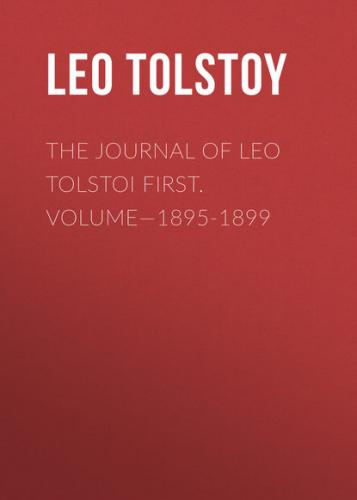98
Anna Constantinovna Chertkov.
99
In the letter to Count L. L. Tolstoi of June 7, 1896, Tolstoi related the incident as follows: “Yesterday a remarkable event happened to me. Two or three times there came to me a young civilian from Tula asking me to give him books. I gave him some of my articles and spoke with him. He was, according to his convictions, a Nihilist and an Atheist. I told him from the bottom of my heart all that I thought. Yesterday he came and gave me a note: ‘Read it,’ he said, ‘then tell me what you think of me.’ In the note it was written that he was a junior officer in the gendarmerie, a spy, sent to me to find out what is going on here, and that he became unbearably conscience-stricken and that is why he disclosed himself to me. I felt pity and disgust and pleasure.”
100
The priest, John Ilich Sergiev (of Kronstadt) (1829–1908), who enjoyed great fame as “The supplicator for the sick.” In his preaching and his books he many times made sharp attacks against Tolstoi and his views.
101
Declaration of Faith.
102
Zakaz, a piece of Yasnaya Polyana forest, not far from the house. Tolstoi was afterwards buried there.
103
Tolstoi had the opportunity to closely observe the nomadic life of the Bashkirs in the province of Samara, where he went in the Sixties to drink kumyss, and in the Seventies and Eighties to his own estates (see
104
A village within four versts from Yasnaya Polyana.
105
Leonilla Fominishna Annenkov (1845–1914), an old friend of Tolstoi’s and an adherent of his philosophy, the wife of a Kursk landlord, the well-known scholarly lawyer, K. N. Annenkov (1842–1910). She made the acquaintance of Tolstoi in 1886 and from that time on corresponded very much with him. Completely sharing the opinions of Tolstoi, she applied them with a rare sequence to life and she was noted for her remarkable abundance of love which attracted every one who met her. Tolstoi valued her highly, considering that she had “a clear mind and a loving heart.”
106
107
It weighed upon him that certain persons to whom he did not want to show his Journal had read it nevertheless. In the last years of his life he was compelled to hide the current Journal somewhere in his rooms, and the finished note-books he gave away in safe keeping.
108
A village four versts from Yasnaya Polyana, where the Chertkovs lived in summer.
109
Declaration of Faith.
110
The note of July 19, 1896, he evidently originally inserted in a note-book from which he later wrote it out in his Journal.
111
Tolstoi’s brother, Count S. N. Tolstoi.
112
This article under the title of “How to Read The Gospels and What Is Its Essence” was printed at first in the edition of
113
Hadji Murad, one of the boldest and most remarkable leaders of the Caucasian mountaineers who played a big rôle in the struggle of the mountaineers with the Russians in the Forties of the Nineteenth Century. In 1852 he was killed in a skirmish with the Cossacks. Tolstoi heard much about him as early as the beginning of the Fifties, when he himself took part in the fight with the mountaineers. A month after the above-mentioned note in the Journal, Tolstoi made a rough sketch of his story,
114
As in the copy at the disposal of the editors.
115
Afanasie Afanasevich Fet (Shenshin) (1820–1892), a Russian lyric poet and translator and friend of the Tolstoi family. Concerning the relations of Tolstoi with him, see
116
Kant, the German philosopher (1724–1804). For the opinions of Tolstoi about him see the Journal, February 19, and September 22, 1904, and September 2, 1906; August 8th, 1907; March 26, 1909.
117
As a sixth sense, Tolstoi recognised the muscular sense. See the note of October 10, 1896.
118
S. I. Tanyeev.
119
The Shenshins – Tula landlords who lived on their estate, Sudakovo, five versts from Yasnaya Polyana.
120
Prosper St. Thomas, tutor of Tolstoi and his brothers. The incident mentioned in the Journal produced a tremendous impression on Tolstoi. “It may have been that this incident was the cause of all the horror and aversion to all kinds of violence which I experienced throughout life,” Tolstoi wrote afterwards in his recollections. (See P. Biriukov:
121
Written in English in the original.
122
Tolstoi, together with Countess S. A. Tolstoi, visited his sister, Countess Maria Nicholaievna, living in the convent
